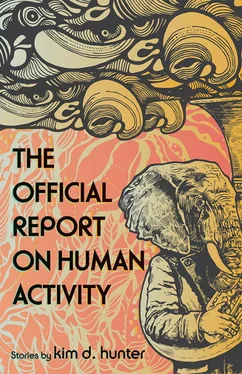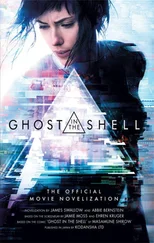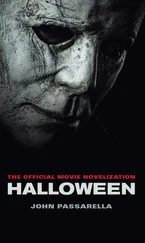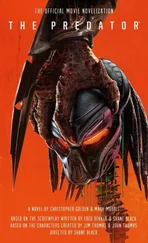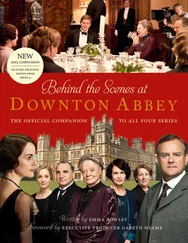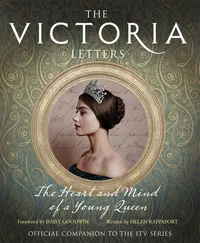When the clouds fall to the ground
You will know where I can be found.
Trackin’ crimes bigger than the sea
Can’t see the forest strung up in a tree.
Stalkin’ the fog,
I’m just a stalkin’ the fog.
Emmett said ain’t nothing to it.
He’ll show you how to stalk the fog.
Ipso saw Rufus Thomas with a James Brown cape open wide like wings. Did it matter that Rufus wasn’t a vegetarian or that he had never so much as entertained the idea? Not now, because the trunk of the elephant was out, smaller than Ipso would have thought and so shiny black it seemed silver in certain turns of the light.
The reporter told the Librarian that when the elephant had fully emerged, Ipso’s blood drained from its skin as if washed by invisible rain. Besides being smaller than any other elephant, its tail was curlier, and the distance between its front and hind legs was greater. The elongation clearly facilitated what everyone assumed to be a message on its hide. If it was a message, it was not delivered with words. The markings may have been hybrid hieroglyphs. Someone suggested calling the Egyptologist who had helped to curate the exhibit at the Detroit Institute of Arts. Just before the call was made, a security guard walked over to ask Ipso about the meaning of the markings on the elephant’s hide. Of course, it was too late.
No one ever confessed to posting the security camera video of Ipso pleading with the Librarian as the seemingly random shapes emerged from his body. She had stumbled upon the video online herself, searching for a long out-of-print book called The Suburban Bitch , about an African-American woman working as a domestic servant in the mid-late twentieth century, which of course meant the people she worked for were white. It seems the Librarian’s grandmother had known the woman who wrote the book. It was written in prison as a part of the author’s therapy, a way to work out the anger so clearly manifest in her crime. The story, virtually forgotten now, had made very serious headlines at the time, the same way the civil disturbances in Detroit in 1967 had made headlines and then been all but forgotten except as a touchstone for the city’s decline.
What had really struck the nearly all-white jury, including the white foreman of the jury—elected foreman by the whites in the room because he had worked at Ford Motor Company as foreman and was thought to have the most experience with African Americans—was that the killing spree began and ended with the family pets.
The prosecutor had ended his opening and closing statements with references to the pets, how the former maid could have left them alone as they were unlikely to be called as witnesses, how the autopsy on the cat showed it had been slain first, before the people were killed, and how the dog’s autopsy had shown it was the last victim. As it had been quoted in the paper, “This woman, who the family had trusted for years, effectively created a pet sandwich of death with the family as the mainstay and the corpses of the dogs and cats acting as the bread.”
Among the things left out of most media stories was that the animals had been ritualistically slaughtered, while the people had been poisoned and slept into death, and that the family had been tied to chairs and sat waiting for the police at the dining room table, plates of exquisitely prepared food before them with a centerpiece of flowers on the table.
Later, in his blog, a graduate student, a playwright (was the name familiar to her?) in the combined disciplines of Art and American Studies referred to the murders as oddly paralleling and presaging some of the more extreme performance art. That reference had a link to the video of Ipso standing before the Librarian with a giant question mark popping out of his body.
The video surprised her on two accounts. First and foremost, she didn’t realize the library had security cameras. Why had she never seen video of any of the other strange goings on at the library, like one of the library’s biggest benefactors, who at every holiday festival would bring in her talking bird that recited the names of the US presidents in backwards order of their election or the homeless guy who only read two books: the dictionary and the city’s ordinances, and would always have to be dragged from the building laughing hysterically? There were other odd recurring events in the building that had never been subject to an internet posting.
Second, who had posted the video? The security guards who monitored the cameras were the most obvious and therefore the least likely suspects. Why risk your job to post a video on the web? Then there was the site upon which it was shown, the site formerly known as I-Fuel, which had been bought by Unicorp and renamed U-Fuel. Being posted on such a well-known site would surely help it go viral.
The Librarian’s mother called and asked if she had seen the video and was it the Librarian on the video. When the Librarian admitted yes to both questions, her mother became frantic. She wanted to know how the Librarian was going to cash in on the video. Why hadn’t the Librarian called her to let her know what had been going on? And, finally, was Ipso in pain when the shapes emerged? The Librarian did not have answers to these questions when her mother asked them. Nor did she have answers when her boss asked virtually the same questions.
The Librarian’s boss did not want to continue to be the Librarian’s boss. He wanted to be the mayor or someone who made more money, got on TV more often and ate at better restaurants. He was unsure how he would become the mayor or someone like her. He had been casting about for a campaign color for his yet-to-be-created yard signs, a bumper sticker slogan, a light or even a tunnel from which a light might emerge. The black shiny elephant on the shadowy video came to him like a bolt of illumination, a tailor-made antidote for the semi-shadow he barely admitted even to himself that he was floundering in.
When the Librarian’s boss called her into his office and interrogated her, there was a woman in the room who seemed to her strikingly out of place. The Librarian could not tell if it was the woman’s flowing clothes in browns, blues, and oh so cautiously muted reds and oranges, or if it was the white briefcase-like container next to the woman that made everything odd. The Librarian could not recall ever having seen a white briefcase, nor was she sure it was a briefcase as it seemed soft as cloth, but in fact was standing up like a briefcase and not like a cloth item which would have collapsed. The Librarian also thought about how the advent of portable computers had made briefcases all but obsolete.
About halfway through the conversation, the woman put her hand on the white briefcase as one would put a hand on a dog that needed calming. The hand all but floated down toward the metallic latches, undid them, and placed the case in the woman’s lap. So the case must have been harder and lighter than it appeared. It wasn’t until the Librarian’s boss repeated himself that the Librarian realized the woman was moving slowly because she was focused on what the Librarian’s boss was saying as the Librarian should have or could have been doing.
“Yes,” the Librarian finally answered, “It was after the question mark emerged that I called the ambulance.” The consultant wondered to herself how the Librarian or indeed anyone could tell the difference between the backward “S” and the question mark.
The audio on the surveillance video was always low, but the segment with Ipso was distorted as well. As the video was passed from viewer to viewer on the Internet, people began to speculate in the comments sections of various sites as to what Ipso was saying or if he was saying anything. Some began to supply their own words, some with music and some without. One person turned the grainy black-and-white video to sepia tone, slowed down the movement, and added the music from an old song:
Читать дальше
